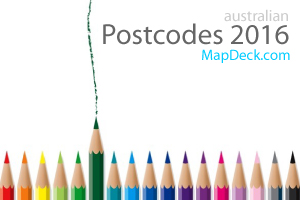Google is continuing with the efforts to make its maps prettier and more useable. The latest change is an enhancement of the quality of more than a thousand 3D landmarks/ buildings around the world. Keir Clarke from Google Maps Mania has created a slideshow to showcase the most attractive landmarks around the world. It uses the Styled Maps feature in the Google Maps API to take away roads and other map features to help the 3D buildings stand out. Enjoy.
Related Posts:
New style for Google Maps
Thursday, March 22, 2012
Wednesday, March 21, 2012
Mapping sun position, anywhere
There are thousands of mapping applications on the web, many very pretty. Some are more useful than others. Occasionally I stumble on something that ends up on my list of favourite tools. SunCalc map is one of such applications. It is a simple map that shows sun movement and sunlight phases during any given day, at any given location around the world. There is nothing much to it – just click on the map in the desired location (or search for a specific locations) then select a date and you will be presented with a full set of information about sun movement for that location.
For example, you can see on the map sun positions at sunrise, specified time and sunset. The thin orange curve is the current sun trajectory, and the yellow area around is the variation of sun trajectories during the year. The closer a point is to the centre, the higher is the sun above the horizon (i.e. it is representative of a shadow). The colours on the time slider above the map show sunlight coverage hours during the day and there is a small table showing exact times for dawn, sunrise, solar noon, sunset and dusk for any given date.
SunCalc is a very handy tool for home buyers, architects and builders. Perfect, if you want to determine quickly if the sun can reach all those less then optimally positioned rooms in the house or apartment at different times throughout the year. It will help to avoid nasty surprises if it turns out that your main living area is not getting any sun for 6 coldest months of the year!
SunCalc map appears to be rather basic but believe me, a lot is happening “in the background” to present the information on the map almost instantly. SunCalc is built with Google Map API v3, jQuery javascript library and Raphael javascript vector graphic library. How about reliability of information, you may ask? I can verify that the results are very reliable - I tested the application for my home location. The match between the real direction of the sun in the sky and on the map was very accurate.
First spotted on Google Maps Mania.
Maps and property investment
Sydney house prices
More handy tools
For example, you can see on the map sun positions at sunrise, specified time and sunset. The thin orange curve is the current sun trajectory, and the yellow area around is the variation of sun trajectories during the year. The closer a point is to the centre, the higher is the sun above the horizon (i.e. it is representative of a shadow). The colours on the time slider above the map show sunlight coverage hours during the day and there is a small table showing exact times for dawn, sunrise, solar noon, sunset and dusk for any given date.
SunCalc is a very handy tool for home buyers, architects and builders. Perfect, if you want to determine quickly if the sun can reach all those less then optimally positioned rooms in the house or apartment at different times throughout the year. It will help to avoid nasty surprises if it turns out that your main living area is not getting any sun for 6 coldest months of the year!
SunCalc map appears to be rather basic but believe me, a lot is happening “in the background” to present the information on the map almost instantly. SunCalc is built with Google Map API v3, jQuery javascript library and Raphael javascript vector graphic library. How about reliability of information, you may ask? I can verify that the results are very reliable - I tested the application for my home location. The match between the real direction of the sun in the sky and on the map was very accurate.
First spotted on Google Maps Mania.
Maps and property investment
Sydney house prices
More handy tools
Labels:
Handy Tools
Thursday, March 8, 2012
Mapping crime in Canberra
Just a couple of weeks ago I reviewed a very impressive UK Crimes Map. Now it is time to put a local equivalent under the microscope. In late February Simon Corbell, ACT Minister for Police and Emergency Services, launched a new interactive online crime mapping tool: Crime Statistics. It has been developed to help provide the public with valuable and accurate information about criminal activity in their neighbourhood. The map provides the local community with crime statistics by suburb, allows drawing comparisons between suburbs and view crime trends over the past five years.
The information presented on the map is quite comprehensive. In particular, the new crime map has data on the number of homicides, traffic and Criminal Infringement Notices, other offences against the person, road fatalities and road collisions with injuries. The information can be viewed as absolute numbers of offences per suburb but also as offences per 1000 of the population, which allows to accurately compare statistics of the larger suburbs with the smaller ones.
Users can select incident type of interest (one or many) and nominate either a year, or quarter of a particular year, to see the total number of those incidents for each suburb in Canberra. The numbers are aggregated to regions on zoom out. The application gives user an option to compare statistics (absolute numbers and rate per 1,000 of population) for up to 3 suburbs. However, trends over time cannot be identified using this application. Overall, the map is simple to use, once you understand the logic how it works, and can give a quick snapshot of criminal activity in the ACT suburbia at a selected point in time.
I would also like to mentioning on this occasion another interactive application with crime statistics for the region which was developed by The Canberra Times. It consists of a series of maps presenting 2011 crime data as thematic overlays. Information is available for patrol areas for the following crime categories: assaults, property damage, theft, car theft, burglary, robbery and sexual offences. Very simple but informative although could be much more useful if data was also presented in a tabular format.
Related Posts:
UK crime statistics revisited
The information presented on the map is quite comprehensive. In particular, the new crime map has data on the number of homicides, traffic and Criminal Infringement Notices, other offences against the person, road fatalities and road collisions with injuries. The information can be viewed as absolute numbers of offences per suburb but also as offences per 1000 of the population, which allows to accurately compare statistics of the larger suburbs with the smaller ones.
Users can select incident type of interest (one or many) and nominate either a year, or quarter of a particular year, to see the total number of those incidents for each suburb in Canberra. The numbers are aggregated to regions on zoom out. The application gives user an option to compare statistics (absolute numbers and rate per 1,000 of population) for up to 3 suburbs. However, trends over time cannot be identified using this application. Overall, the map is simple to use, once you understand the logic how it works, and can give a quick snapshot of criminal activity in the ACT suburbia at a selected point in time.
I would also like to mentioning on this occasion another interactive application with crime statistics for the region which was developed by The Canberra Times. It consists of a series of maps presenting 2011 crime data as thematic overlays. Information is available for patrol areas for the following crime categories: assaults, property damage, theft, car theft, burglary, robbery and sexual offences. Very simple but informative although could be much more useful if data was also presented in a tabular format.
Related Posts:
UK crime statistics revisited
Labels:
Featured Maps
Subscribe to:
Posts (Atom)






